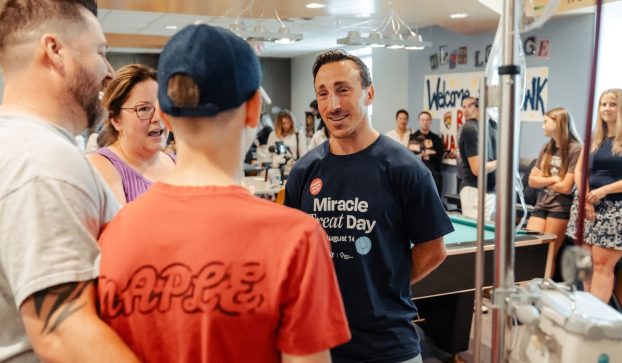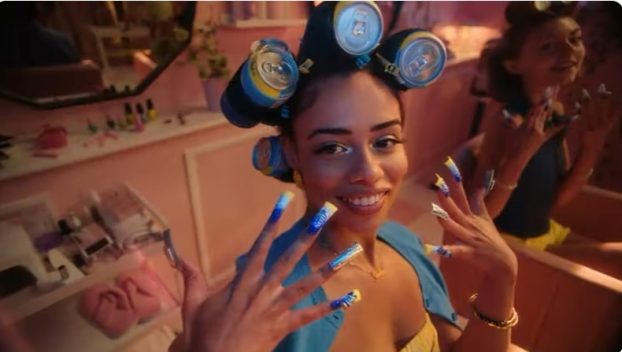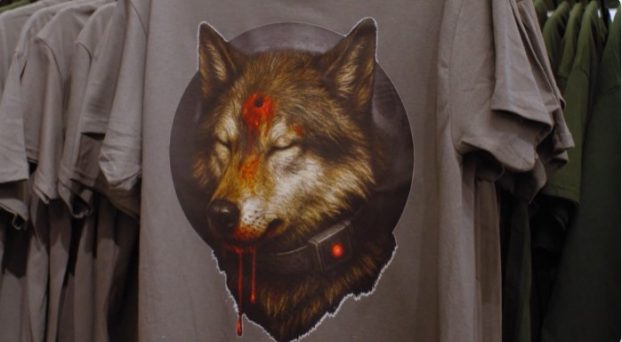Bobby Brittain has been spending a lot of time on Twitter lately. The vice-president of Coca-Cola Canada’s Sparkling unit is learning about leveraging social media from the semi-finalists in the “Covers” campaign, who are rallying their networks to vote them into a shot at winning the first-ever MuchMusic Video Awards (MMVA) Covers Award.
Sponsored by Coke, “Covers” opened mid-February with a two-week teaser campaign on MuchMusic. A six-week casting call brought in 1,200 video entries from Canadians aged 16 and over singing cover versions of six pre-selected songs. Ten semi-finalists recorded new videos of covers of BOB, Avril Lavigne or Usher songs and are now promoting themselves on Facebook, Twitter, YouTube and anywhere else they can for a shot at the top three, who will be flown to Toronto for the awards in June, after which the winner will be featured in two more weeks of promotions. A similar program is running on MusiquePlus in Quebec.
The program mixes perfectly with Coke’s commitment to music as a connection platform, says Brittain. “Music has been an integral part of the way the brand has connected with people for years,” he says, referring back to the song “I’d Like to Teach the World to Sing” in the 1971 “Hilltop” TV spot that dreamed of buying the world a Coke. “If you watch MuchMusic you get a sense of almost naïve optimism; it has a generosity that is very much part of the Coke brand. So it’s a good fit.”
Coke’s strategy centres on a two-part premise known as “liquid and linked,” which takes a central creative idea and “goes crazy with it,” says Brittain. “That’s the ‘liquid’ part, that the core creative idea spreads like liquid through every possible medium” from the website to TV ads and other music partners. “The ‘linked’ piece is that all these touchpoints show up in a consistent way that is relevant to our target audience and to the medium.”
While the first phase of the campaign is focusing squarely on the youth demo, Brittain anticipates that the audience will widen as the semifinalists squeeze every last vote out of their social networks to win the contest.
Spots driving people to the voting site began airing in February and run until July 4 on Much and MTV, during shows like Gossip Girl and Jersey Shore, online on Muchmusic.com and MTV.ca, as well as on popular teen music site Vevo.com.
“Inevitably it’s not just teens that are watching Much or going on our Facebook site or Twitter, but we are being less intentional about connecting with those people,” he says. “We know from experience that staying faithful to the audience that we want to connect with helps us enormously in terms of the creative approach that we take, and the media targeting as well, that we’ll allow that liquid story to spill over into other audiences.”
Nowadays digital investment is met with far less skepticism than it once was, says Brittain, who still reserves around 20% of his budget for experimentation—campaign elements that don’t have a concrete ROI model. “It’s through that experimentation that we learn about our consumers,” he says. “We have to fight even harder to get their attention and their love and affection.”
One thing that makes that fight easier is the way in which some social media companies have structured themselves to meet client needs. Coke corporate HQ in Atlanta develops strategy and models in partnership with equivalent offices at Facebook or Google, while back home in Canada, Brittain and his media agency Universal McCann work with local client services.
“Where it’s worked really well is where we’ve ensured that at an early stage we’ve shared our plans, and given them the opportunity to come back to us with what they can do at a local level to enhance the campaign,” he says.
As “Covers” wraps in early July, Coke will continue to invest in the music space, says Brittain. “What you will see is a broadening of the music platform into other passion points and other connections.”
Another brand that’s broadening its reach via social media is Frito Lay’s Doritos. “We leverage social media and online communication tools as much as we can to serve as conduits of information directly to the consumer about every aspect of the program as it happens,” says Haneen Khalil, marketing manager, Doritos. Khalil and Toronto-based agency BBDO have formed a digital team including community moderators to shape, develop and execute social media strategy.
“We have the capability to respond 24/7 to any issues. We evaluate feedback as it arises and sometimes there are instances where we have to get back to the consumer within a matter of hours, or sooner.”
After the success of campaigns like “Guru” – which offered $25,000 and 1% of product sales to the makers of a video that successfully named a mystery chip flavour – and last year’s “Viralocity,” the brand has decided to take it down a notch with “The End.” They’ve learned that while there is a passionate community of creators online, asking for video submissions narrows the pool, so they simplified the ask this year.
Launched, like “Guru,” during the Super Bowl, an ad for “The End” introduced two new flavours and challenged consumers to write an ending to the commercial in which one “lived” and the other was destroyed. The spot drove to Writetheend.ca, where consumers could enter their endings.
Exceeding their goal of 6,000 entries in the first week, Doritos received nearly 30,000 in total, out of which the team chose 14 finalists, which ranged in content from a sword fight, to combat robots to a poodle wearing a bowtie. Divided into two camps, the finalists are ranked on the site based on how many people shared their entries on Facebook and Twitter.
Khalil says the ease of entry is partly the reason for the overwhelming response. “In past programs, we received many high-calibre, creative video submissions from students in the creative or film field and related industry types,” but adds that shooting a commercial is a barrier to entry for many consumers.
The winner was announced live on MuchMusic on May 5, at their scripted commercial debut. On top of the $25,000 cash prize and 1% of sales, the winner also joins a Doritos Think Tank, contributing ideas to the brand through the end of the year.
“Our core consumer is very opinionated and shares their opinions at lightning speed,” says Khalil. “There is never a program that makes everyone happy, but creating something interactive that satisfies the great majority of fans, gets our consumer actively participating, as well as builds buzz and talk value, is what we always aim for.”
In order to meet this need, Khalil’s team process veers heavily toward social media and trend-watching, “We need to fish where the fish are,” says Khalil. “It’s all about finding the right strategy to reach different touchpoints and collaborating with consumers to remain connected and relevant.”
***
Facebook brand BFFs
Facebook Canada released a list of the top 10 brands by number of fans recently. Of course, getting fans is easy; it’s keeping them engaged that matters. We visited some pages to see how they got to the top.
BlackBerry – 12 million fans
Research in Motion’s flagship mobile brand has invested heavily in its Facebook presence, with product launches, lots of news chatter and, of course, apps. The recent launch of the PlayBook tablet was the next best thing to having one in your hands, including an integrated Twitter contest, event updates, a link to purchase and a Facebook for BlackBerry PlayBook Tablet App video demo.
Tim Hortons – 1.36 million fans
Canada’s favourite coffee brand crowdsourced the world’s longest “rolling-R” video for the
25th anniversary of the retailer’s much-loved “Roll Up the Rim to Win” campaign in February. The challenge, which asked fans to record themselves rolling or trying to roll their Rs and then upload the results to Facebook using Fotobabble, was designed to support the larger annual initiative, driving to Rolluptherimtowin.com.
Budweiser – 670,000 fans
Launched last summer, the Bud Phone free branded phone app enables free Skype-style calls, ensuring that fans think of the King of Beers each time they make a call. And no Canadian can resist the latest “Keys to the Cup” promotion, offering a chance to see a Stanley Cup final game.
Telus – 532,000 fans
In October, the telco donated a dollar to hospitals for breast cancer detection equipment for every fan who turned their profile picture pink under its “Go Pink” campaign, raising $200,000 and boosting fans to half a million.
Molson Canadian – 444,000 fans
From eating donuts to building a dock, the beer brand doled out virtual Boy Scout badges for fans who completed tasks in its “Seize the Summer” promo last summer.
Canada’s Wonderland – 421,000 fans
The theme park launched a new ride exclusively on Facebook last August, creating buzz that’s spilled over into a push for season ticket sales this spring.
La Senza – 340,000 fans
“Lingeristas” get special offers, heads up on promos and sales galore, the latest being the “Perfectly Me” quiz to discover their bra personality and win one of 10 shopping sprees.
Pepsi – 233,000 fans
As part of the Pepsi Refresh charitable grants program, the “Do Good Scholarship Draw” invites Canadian university students to circulate pics of themselves holding charity signs through their social networks for a chance to raise cash toward the cause and their tuition – and increased Pepsi’s fans by 20,000 in the first six weeks.
Garage – 221,000 fans
Over 200 videos were sent in to the fashion retailer’s “Get Loud” contest – part of its strategy to connect with its young female target online – which invited fans to create a video showing their “Garage spirit,” getting over 317,000 votes and 13,000 comments. The winner got a free concert for their school.
TSN – 210,000 fans
The Sports Network has set up shop on the social network, with news feeds, links to videos, polls and contests like the TSN Predictor, a Stanley Cup final pool. Hockey, again!
Figures provided by Facebook Canada, February 2011. With files from Media in Canada.























